
One of the best examples which can be used to show the importance of content marketing for B2B businesses is HubSpot. It became a public company worth a billion-plus dollars within a decade of its founding. How? By regularly creating top-notch content.
There is not a single marketing topic you will find missing on their blog. Everything from case studies to ebooks to marketing templates that target their potential customers in different stages of the funnel is available aplenty.
There is no greater proof of the power of content marketing than HubSpot.
With that in mind, let us learn about some of the best B2B content marketing strategies that will work for any online B2B marketplace.
Effortlessly export your Google Docs to WordPress with just 1-click.
Get Started Today
Without a strategy, the odds of your B2B content marketing campaign becoming successful is low. An effective content marketing strategy will tell your brand’s story to your potential and existing customers.
Let us look at how you can create one.
1. Set clear goals
While it may seem like a pretty ordinary thing to say, not having clear goals is one of the biggest reasons why most content marketing campaigns have little to no effect. Knowing what your goals are will give you the right fillip to come up with strategies that will help you accomplish them.
If your objective is to increase your brand awareness, but the content you create is all about selling, then you are barking at the wrong tree.
2. Know your audience deeply
Let’s say that you are responsible for finding a channel to attract customers for a children’s toy brand, like Hamleys. Would you be concentrating the most on a channel such as LinkedIn? Absolutely not. This is where knowing your audience helps.
So, if you want a solid B2B content marketing strategy that will work for your B2B online marketplace, find out where your audience lurks, what kind of content they like, and what kind of considerations they make before buying a product.All of this is possible if you create buyer personas for your brand.
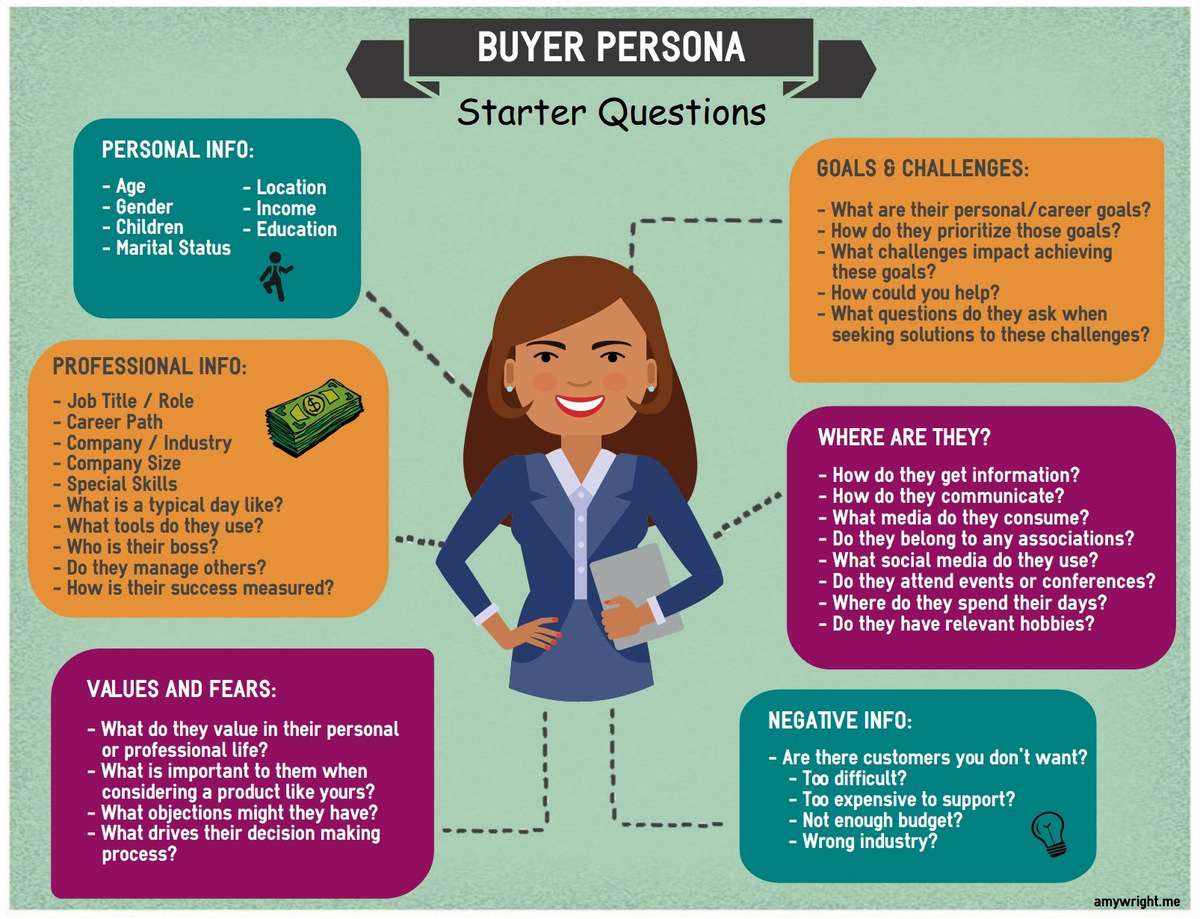
The above image shows the kind of in-depth questions that are asked while arriving at a brand’s buyer personas.
3. Establish KPIs
The next step is to make sure that you choose metrics that can be used as a benchmark to see the improvement you will be making in your plan. Some of the KPIs that you can set for your content marketing strategies are:
While there can be many more that you choose, the above ones are good to start with.
4. Allocate your resources:
For your B2B content marketing strategy to be successful, a lot of things have to fall in place. It is important that you choose the resources wisely, both tools and people.
Here are a few questions that you need to ask during this process:
5. Assess your current position:
Not all businesses are starting from scratch when it comes to creating content. Many of them would have a few blogs, social media content, videos, podcasts, interviews, or may think of starting a podcast. At this stage, you need to see if the current content is helping you in any way.
Carry out a content audit by assessing the effectiveness of the current content. See if there are improvements that can be made to it so that you can repurpose them in different content types.
While there are a gazillion ways to make your B2B content marketing highly potent, we have chosen eight of them. These tactics will surely make a difference in reaching out to your target audience, budding relationship, and converting them.
Storytelling, when you do it right, has the power to captivate your audience to see your brand in a completely different light. Humans love stories and it helps us connect with each other.
Thankfully, businesses can leverage this as well to forge a connection with their target market. We have grown up listening to fables and fairy tales. Also, some of the greatest leaders in the world amassed followers through the power of storytelling. No wonder brands are trying everything possible to captivate their audience with storytelling.
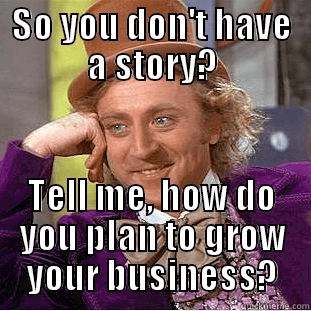
Spotify, the music streaming service, has data about the songs, artists, and playlists that its 165+ million subscribers around the world consume. They use this information, along with location data and demographics, to create interesting content for their blog. From ‘How Students Listen’ to ‘Party Playlists in the US’, they have everything. By using data for storytelling, they are one up against their competitors.
B2B content marketing is all about offering value to your potential customers. When it comes to the execution stage, many a marketer stumble. Even before you create a single piece of content, you need to establish your goals and expectations. A B2B content calendar has to consider buyer personas, marketing channels, and the stages in the sales cycle where the leads are, to create an effective one.
Here is how you can create an effective B2B content calendar:
eBooks, case studies, white papers, guides, infographics, blog posts, etc. are different types of content that are necessary for your B2B content marketing strategies in place. Each of these content types is useful for your target audience who are in different stages of the buying cycle.
For example, a lead that is in the final stages of the buying cycle wouldn’t be too eager to read a blog post that provides basic information about your industry. Instead, you should provide them with more reasons to buy from you by offering a free consultation call or a product demo.
As a business, you need to be present at every stage of the buyer’s journey. The goal is to bring your potential customers one step closer at every stage.
An ideal buyer’s journey includes the following stages
1. Awareness stage:
The awareness stage is when the prospect has realized that they are facing a challenge and are trying to see if they can find a solution for it. During this stage, here are the following types of content that will work best.
2. Consideration stage
At this stage, the prospect is looking at a few solutions, including yours. Here are the content types that are most effective for your B2B leads at this stage.
3. Decision-making stage
At this stage, the prospect makes the final decision after narrowing down the many options to a few. Here, the objective is to show the potential lead why they should choose your business over a competitor’s. Here are the content types that you need to create for this stage.
If you are able to check the list of all the stages, you will be able to be at the top of the buyer’s mind.
4. Personalize, personalize, personalize
Personalization is the process of creating unique content that is relevant and customized for your target audience. In B2B content marketing, personalization will help you improve conversion rates, enhance your campaign’s reach, provide better brand value, grow engagement, etc. Remember to personalize your websites as any b2b web design company would also strive to make a unique website with a personalized approach for their core audience.
For example, if a lead has a unique problem, you should come up with content that addresses that particular issue. Focus on solving one potential problem at a time — each stage.
Here is how you can personalize your content for your B2B audience:
Creating different types of personalized content as we have mentioned above is not easy. It takes a lot of effort, plethora of resources, and there are no shortcuts to see you through. But the best part about creating personalized content is that you will be able to satisfy the needs of your prospects and will stand out as a brand that means business.
5. Streamline content distribution
Distributing your content is an important part of your B2B content marketing plan. If you have no solid plan for distribution, the content that you have created will be rotting on the sidelines. The only way for people to discover your content, and eventually, your brand, is by distributing the content you created using a variety of channels.
Rand Fishkin — Wizard of Moz, Founder of SparkToro raises the concern on content deteriorating over time.
The most common reason being, a lot of noise in B2B marketing. It’s because businesses are trying to capture the attention of their target market. On top of that, customers are overloaded with information, and because of this, making them consume more content is only getting difficult. To ensure that you reach the right target audience, you should not only create stellar content but also have the right strategy when it comes to distributing it.
Ross Simmonds, CEO of Foundation Inc, who is a great preacher of content distribution, says that there are four distribution categories.
The most effective among all of these is the Rocket channels. As per your content and business needs, you choose the channels to double down.
For B2B businesses, not all social media platforms are going to be helpful. Twitter and LinkedIn have the kind of audience that would love to read business-related information. More often than not, these two platforms are the right place to direct your content marketing efforts.
A Linkedin study found 4 out of 5 LinkedIn members drive business decisions at their companies. Also, 75% of B2B businesses market their products/services on Twitter because it increases the purchase intent five-fold.
If you have ever wondered how LinkedIn and Twitter are great as a B2B content marketing channel, then the above two statistics are your answer.
When it comes to using Twitter for content marketing, you can start by checking out the most trending topics and hashtags in your niche, including the most active accounts. Make sure you respond to the questions asked by your prospects and engage with your followers on a regular basis.
From announcing new product launches to engaging with its fans, Adobe does everything right when it comes to Twitter. They regularly post different types of messages, including videos.
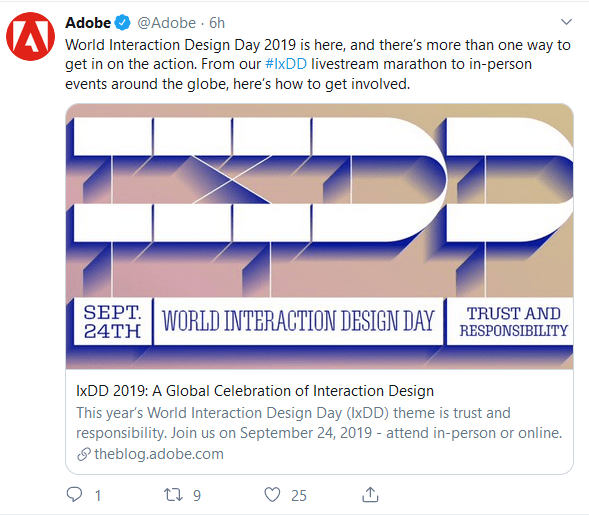
The above tweet celebrating World Interaction Design Day 2019, is an example of how they brilliantly use Twitter to come across as both fun and engaging.
For LinkedIn, you need to come up with meaningful and relevant content that will help educate, inform, and build trust with your target audience. Connect with LinkedIn influencers in your niche.
You can expect Coca-Cola to have a powerful presence even on LinkedIn.
Let us look at how they have maintained their brand’s account on LinkedIn. They constantly update the page with the brand’s news and updates, and also about the various campaigns that they participate in.
Coca-Cola uses LinkedIn to promote their products, create awareness for social issues, support the initiate in sport and other fields.
During the recent Tokyo 2020 Paralympic Games — Coca-cola and the Paralympic Committee of India collaborated to celebrate the heroes and encourage Inclusion & Diversity.
This is how they reach wider audiences and become a household name across the globe.
Co-marketing generally means brands working to create a co-branded product where both the parties will promote it and share the success equally. In content marketing, a co-marketing campaign involves creating a piece of content together. The co-marketing content could be a blog, a joint webinar, whitepaper, etc. which might even be used as a lead magnet where both the brands get access to the leads.
It can only be successful when the objective of such a campaign is the same for both brands. If one party is looking to sell their software, while the other one is looking to build their brand image, it can turn out to be a failure.
In co-marketing content promotion there should be a win-win for all. You can leverage this only if both brands have the same target audience with different products and use cases.
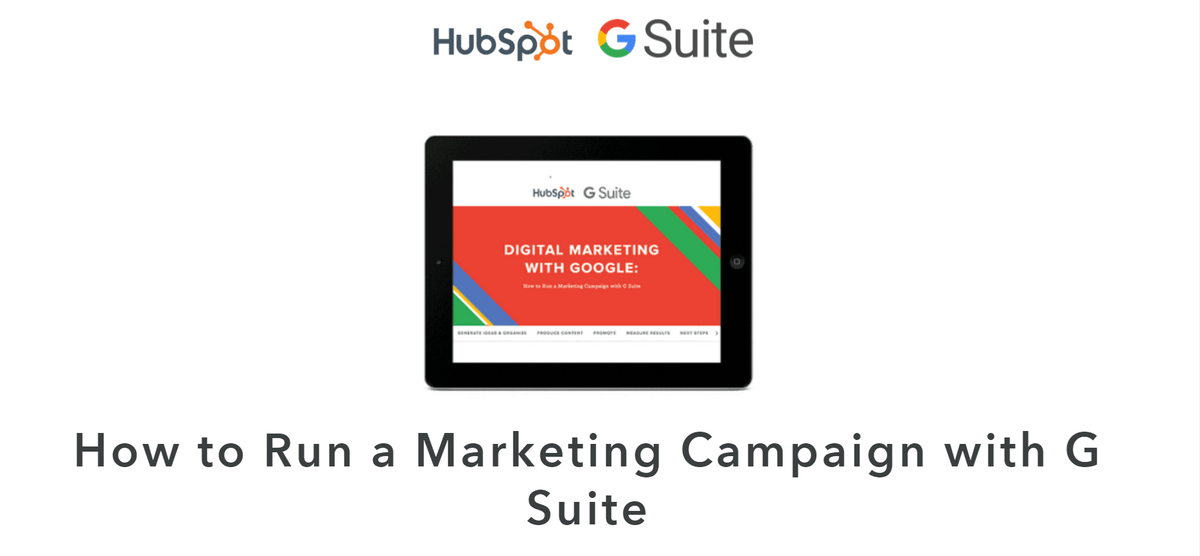
The above is an example of a co-marketing content promotion that HubSpot and Google had with each other. In this guide, you will find real examples of how HubSpot’s marketing team uses G Suite in their campaigns. There are also takeaways that can be used for your own strategy in G Suite.
81% of B2B marketers report that their organization uses metrics to measure content performance. Unfortunately, out of these, 33% of B2B marketers find it difficult to measure a content marketing strategy’s performance. In marketing, if you do not measure, you will never know where you stand or see how you have improved.
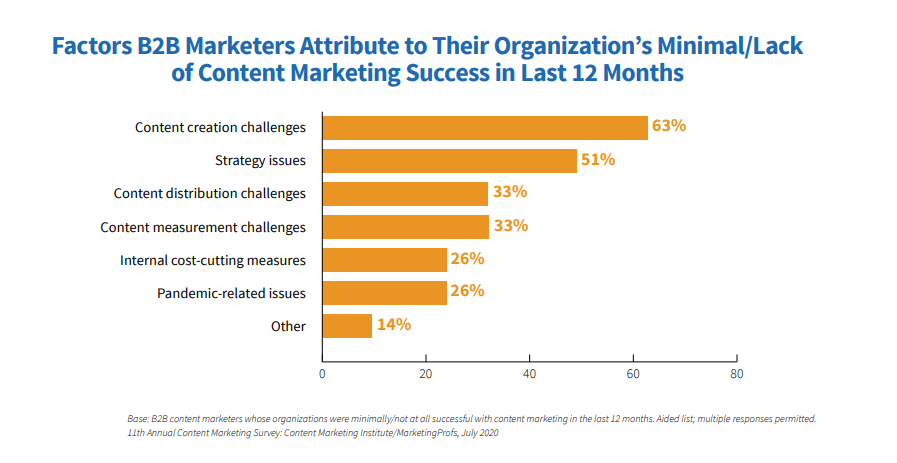
For those who find it difficult to measure the result of a content marketing strategy, all they need to do is choose the metrics that need to be tracked, the technologies and tools that you would require, input the data into an analytical tool, assign value to the metrics, track the costs, and measure the progress. As a business, you should avoid vanity metrics.
Below are some of the strategies that we have used and found to be successful:
In the end, the percentage of visitors that buy our products will tell us if we are able to attract the right people through our content marketing. Also, patience is a virtue, especially so, in content marketing. Organic traffic from search engines doesn’t come overnight.
Content is king, queen, and the whole army put together. If there is an efficient B2B content marketing strategy in place and you possess the technical know-how, expertise, and resources to implement it successfully, then you are gold.
We hope that this article inspires you to take the right step when it comes to content marketing for your B2B business.